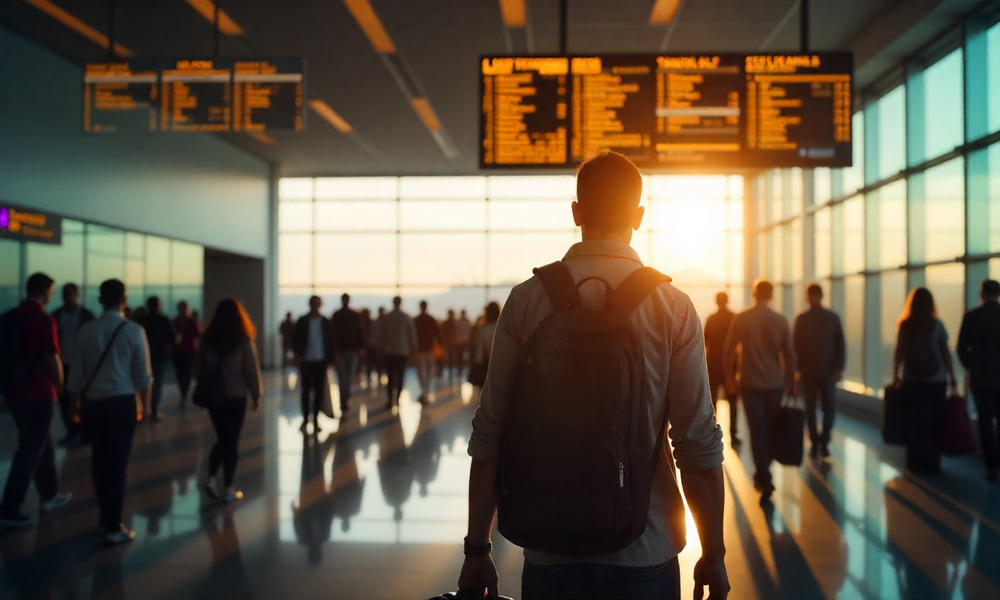Published on
November 13, 2025
U.S. tourism from Canada has taken a significant hit as political tensions, rising travel costs, and safety concerns increasingly push Canadians to seek alternative vacation destinations. With a weakened Canadian dollar and a divisive political climate under Donald Trump, many are opting for more affordable and secure travel options in regions like the Caribbean, Europe, and Latin America. These factors have reshaped travel trends, leading to a decline in cross-border visits and a noticeable shift in Canadians’ preferred holiday spots.
Many Canadians are avoiding trips to the United States months after the election of Donald Trump as president. Concerns about safety, political tensions, and rising travel costs have led to a noticeable decline in Canadian visits to the U.S. As a result, airlines are increasing flights to alternative sunny destinations, while U.S. states are launching tourism campaigns in an effort to win back Canadian travelers.
Data shows that the number of Canadians traveling to the U.S. has significantly dropped, with a sharp decline in both air and car travel. In September 2025, the number of Canadians returning from the U.S. dropped by one-third compared to the same month in 2024. This marked the ninth consecutive month of declines, particularly in car travel. Older generations, particularly baby boomers, are the most likely to avoid U.S. travel, while younger travelers, particularly Gen Z, have shown a smaller drop in interest.
A variety of factors have contributed to this trend, with political tensions under Donald Trump being a key driver. The rhetoric coming from the U.S. administration, along with tariffs and anti-Canadian sentiments, has created a sense of unease among many Canadians. Additionally, the value of the Canadian dollar, currently worth about 71 U.S. cents, makes travel to the U.S. less affordable. Consequently, Canadian airlines like Air Canada have shifted their focus away from U.S. routes, expanding service to the Caribbean, Latin America, and Europe instead.
In response, U.S. states have launched tourism campaigns to attract Canadians back. For example, California’s tourism industry expects Canadian visitors to spend $3 billion in 2025, down from $3.7 billion the previous year. The state has launched the “California Loves Canada” campaign, hoping to reverse the trend. Despite these efforts, many Canadians remain hesitant to visit the U.S. due to concerns over immigration policies and the unpredictability of border interactions.
Although many Canadians are staying away, nearly 1.8 million still visited the U.S. by land or air in September. However, some travelers feel uneasy about crossing the border, especially given the potential for interactions with U.S. immigration authorities. Past reports of detentions and fears of border crackdowns have added to the hesitation, particularly for those traveling for leisure rather than business.
For some younger Canadians, cost remains a driving factor for visiting the U.S. Orlando’s Disney parks, for instance, are seen as a more affordable option than traveling to international destinations like Tokyo. Despite this, many of these travelers are opting for what has been described as “quiet traveling,” avoiding public discussions and social media posts about their trips to the U.S.
Business travel to the U.S. remains steady, as professional obligations often outweigh political concerns. However, many Canadians are reluctant to travel to the U.S. for leisure, citing political reasons and the uncertainty of the current political climate.
Canadians who own property in the U.S., particularly those who spend the winter in southern states, continue to make the trip despite the political and economic challenges. Between 30–40% of snowbirds, as they are known, own property in the U.S., and they are often unwilling to leave their homes empty during the winter months. For this group, the practicality of spending the season in the U.S. remains a key factor.
Experts suggest that the onset of winter may prompt more Canadians to head south, as snowbirds traditionally seek warmer climates to escape the harsh Canadian winters. According to industry analysts, the first snowstorm often triggers an increase in the number of Canadians migrating to the U.S. for the winter season, despite the political and economic obstacles.
In the broader context, the overall decline in Canadian travel to the U.S. has led to a shift in tourism patterns, with travelers seeking alternative destinations. While the U.S. continues to be a popular choice for certain groups, the ongoing political climate, rising costs, and concerns about safety may mean that the trend of avoiding U.S. travel persists for the foreseeable future.
link

